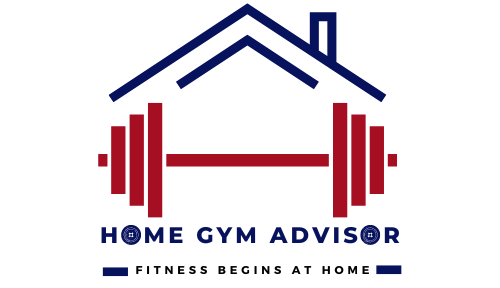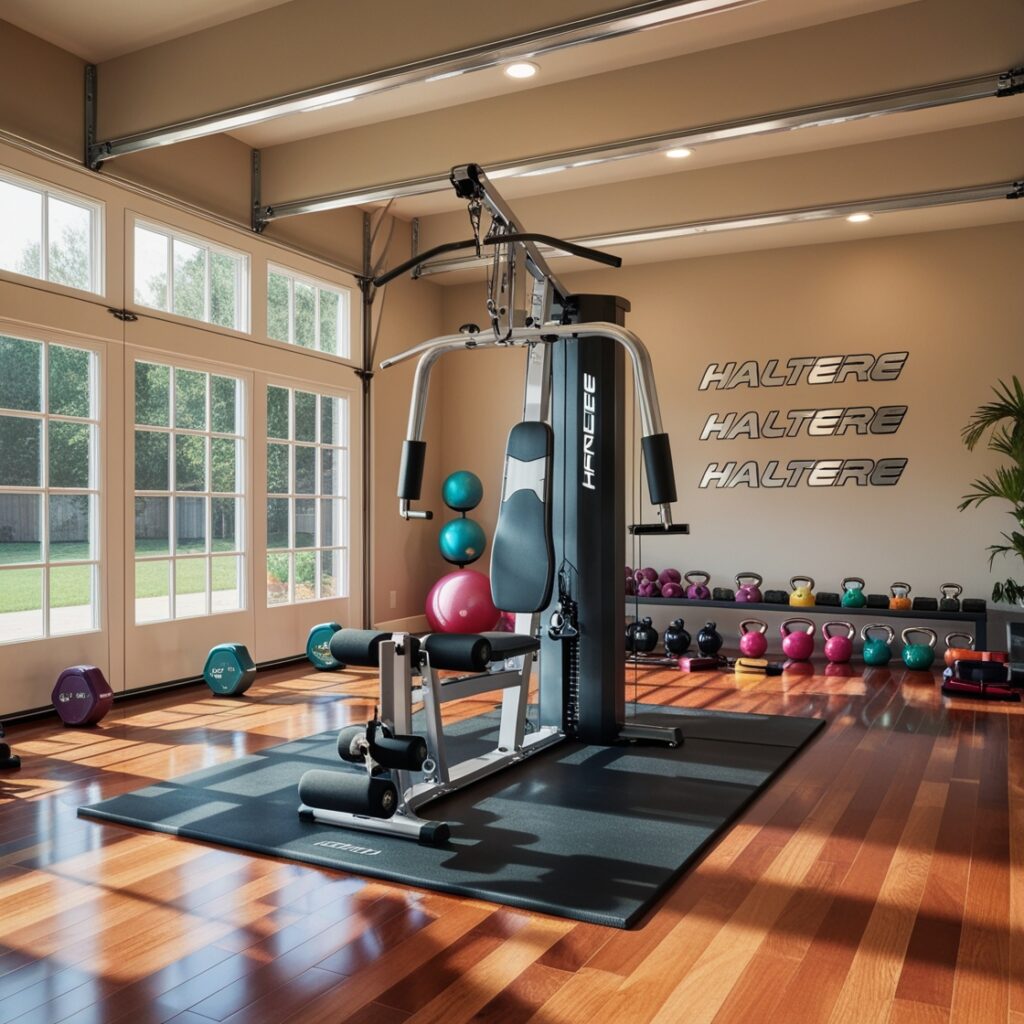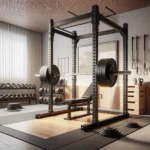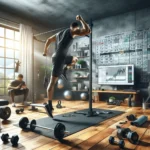Creating a home gym can be one of the most rewarding investments you make for your health and fitness journey. With the rise of remote work and the increasing popularity of personalized fitness routines, more people are choosing to bring their workouts home. This guide will walk you through every step of building your ideal home gym—from assessing your fitness goals to selecting equipment, planning your space, and maintaining motivation.
Why Build a Home Gym?
– Convenience: No more commuting to the gym; workout whenever you want.
– Cost-Effective: Save on gym memberships in the long run.
– Customization: Tailor your space to fit your specific needs and preferences.
1. Assess your Fitness Goals
– Identify your Objectives
Understanding your fitness goals is crucial for designing a home gym that meets your needs. Here are some common objectives:
– General Fitness: Focus on overall health, flexibility, and basic strength.
– Strength Training: Prioritize weightlifting and resistance exercises to build muscle.
– Endurance Training: Emphasize cardio workouts like running, cycling, or HIIT.
– Setting SMART Goals
Utilize the SMART criteria (Specific, Measurable, Achievable, Relevant, Time-bound) to set clear objectives. For example:
– Specific:”I want to lose 10 pounds.”
– Measurable: “I will track my weight weekly.”
– Achievable: “I will create a workout plan that includes cardio and strength training.”
– Relevant: “This goal aligns with my desire to improve my overall health.”
– Time-bound: “I aim to achieve this in three months.”
2. Evaluate your Space
Available Space Options
Assessing the space you have available is essential for determining what equipment you can include.
– Limited Space: If you have a small apartment or limited room:
– Opt for compact equipment like adjustable dumbbells and resistance bands.
– Consider foldable benches that can be stored away when not in use.
– Dedicated Room: If you have an entire room:
– You can invest in larger machines like treadmills or power racks.
– Ensure adequate ventilation and lighting for an inviting atmosphere.
Room Considerations
– Ceiling Height: Make sure there’s enough clearance for exercises involving overhead movements.
– Flooring: Protect your floors with rubber mats or interlocking foam tiles to absorb impact and reduce noise.
3. Budget Planning
Set Your Budget
Creating a budget is vital for ensuring you don’t overspend while building your gym.
– Basic Setup ($300 – $1,000):
– Essential items like adjustable dumbbells, resistance bands, and a yoga mat.
– Intermediate Setup ($1,000 – $3,000):
– More specialized equipment such as a power rack, barbell set, and cardio machine.
– Advanced Setup ($3,000 – $10,000+):
– High-end machines like multi-functional trainers and comprehensive free weight sets.
Tips for Saving Money
1. Buy Used Equipment: Check local classifieds or online marketplaces.
2. Look for Sales: Keep an eye on seasonal sales or clearance items.
3. Invest in Versatile Equipment: Choose items that can serve multiple purposes.
4. Choose Essential Equipment
For General Fitness
If your goal is general fitness, consider these essential items:
– Cardio:
– Jump Rope: A great tool for cardiovascular workouts.
– Resistance Bands: Versatile for strength training and stretching.
– Strength:
– Adjustable Dumbbells: Space-saving and adaptable for various exercises.
– Kettlebells: Excellent for dynamic movements that engage multiple muscle groups.
– Flexibility:
– Yoga Mat: Essential for floor exercises and stretching routines.
– Foam Roller: Great for muscle recovery and flexibility.F
For Strength Training
If strength training is your focus:
– Core Equipment:
– Squat Rack: Fundamental for heavy lifting.
– Barbell & Weight Plates: Essential for various strength exercises.
– Accessories:
– Pull-Up Bar: Ideal for upper body strength training.
– Resistance Bands: Useful for assistance with pull-ups or added resistance during lifts.
For Cardio and Endurance
For those focusing on cardio:
– Machines:
– Treadmill: Great for running indoors regardless of weather conditions.
– Exercise Bike: Ideal for low-impact cardio workouts.
– Accessories:
– HIIT Timer: Helps keep track of intervals during high-intensity workouts.
– Battle Ropes: Excellent for full-body conditioning.
5. Plan the Layout
Design Your Space
Planning the layout of your home gym is crucial for functionality:
– Zoning: Create distinct areas for different types of workouts:
– Cardio Zone: Allocate space for machines or jump ropes.
– Strength Zone: Designate an area with weights and benches.
– Safety Considerations: Ensure there’s enough space around equipment to prevent accidents during workouts.
Sample Layout Ideas
1. Small Apartment Gym Layout:
– Use wall-mounted storage solutions to save floor space.
– Keep equipment minimal but versatile (e.g., resistance bands, adjustable dumbbells).
2. Dedicated Room Gym Layout:
– Position larger machines against walls to maximize floor space.
– Create a stretching area with mats away from heavier equipment.
6. Consider Additional Features
Flooring and Storage Solutions
Investing in protective flooring can enhance safety and comfort:
– Protective Flooring Options:
– Rubber Mats: Durable and shock absorbent; ideal for weightlifting areas.
– Foam Tiles: Soft underfoot; perfect for stretching zones.
Storage Solutions
Keep your gym organized with effective storage solutions:
1. Racks & Shelves: Use these to store weights and accessories neatly.
2. Bins & Baskets: Great for keeping smaller items like bands or towels organized.
Entertainment & Motivation
To keep workouts enjoyable:
1. Audio/Visual Systems: Install speakers or a TV to play workout videos or music playlists.
2. Mirrors: Adding mirrors can help monitor form while creating an illusion of more space.
7. Maintenance and Safety (Approx. 400 words)
Equipment Maintenance
Maintaining your equipment ensures longevity:
1. Regular Cleaning: Wipe down machines after each use to prevent wear.
2. Inspection Routine: Periodically check all equipment for signs of damage or wear.
Safety Measures
Creating a safe workout environment is essential:
1. Proper Lighting: Ensure the gym is well-lit to prevent accidents during workouts.
2. First Aid Kit: Keep a basic first aid kit accessible in case of minor injuries.
Building a home gym tailored to your fitness goals is not only an investment in your health but also an opportunity to create a personal sanctuary dedicated to wellness. By assessing your objectives, evaluating available space, planning your budget wisely, selecting essential equipment, designing an efficient layout, considering additional features, and maintaining safety protocols, you can create an effective workout environment that motivates you every day.
Remember that consistency is key; even the best-equipped home gym won’t yield results without commitment! With this comprehensive guide as your roadmap, you’re well on your way to achieving your fitness aspirations from the comfort of your own home.







